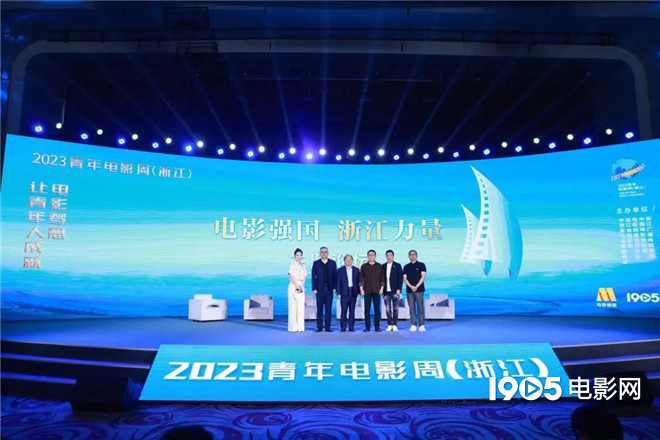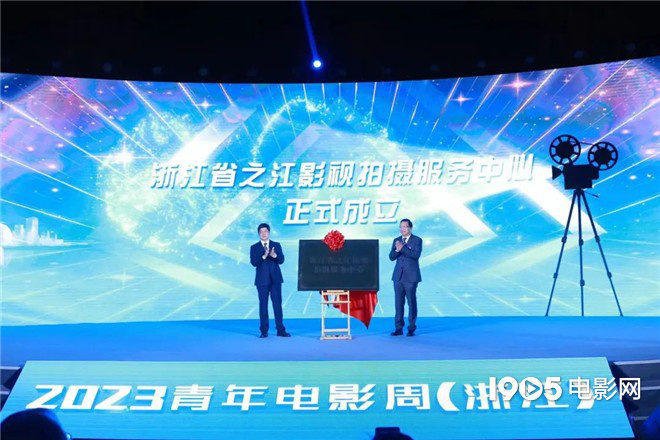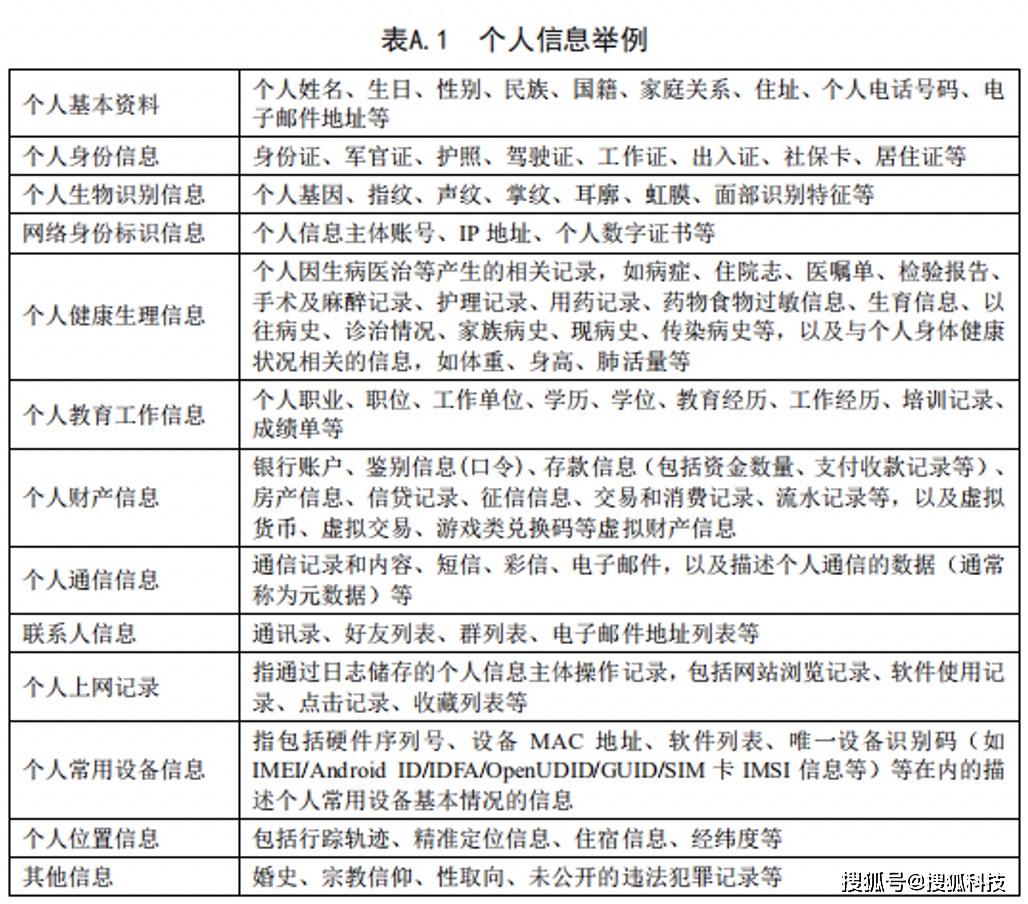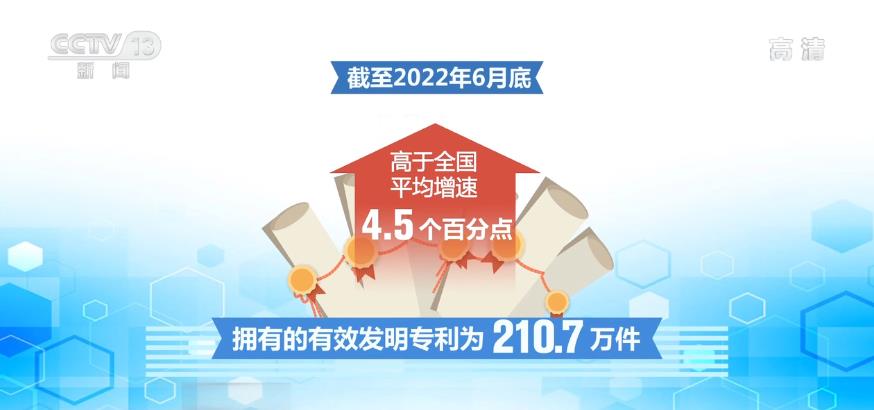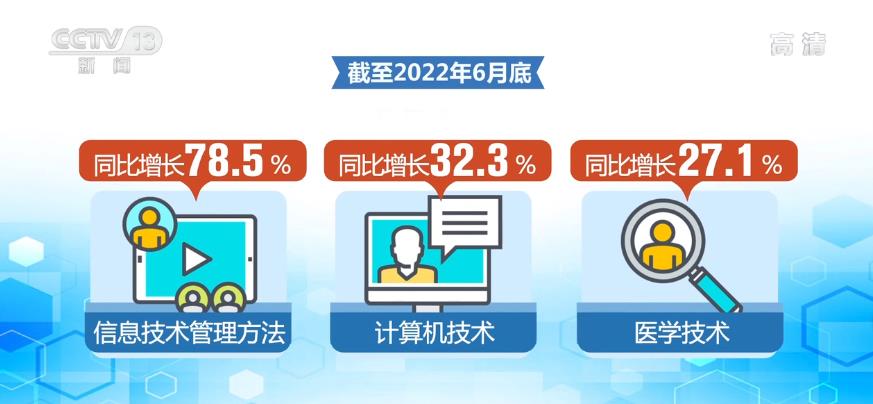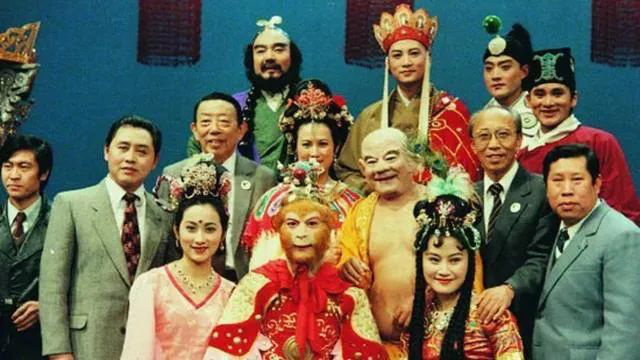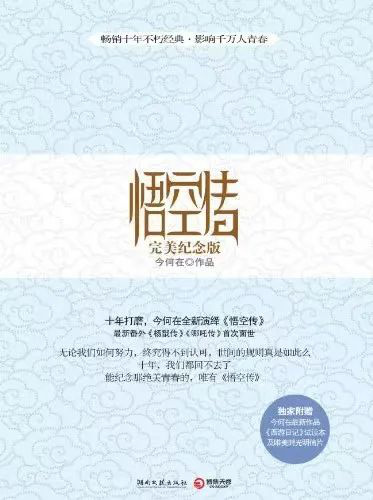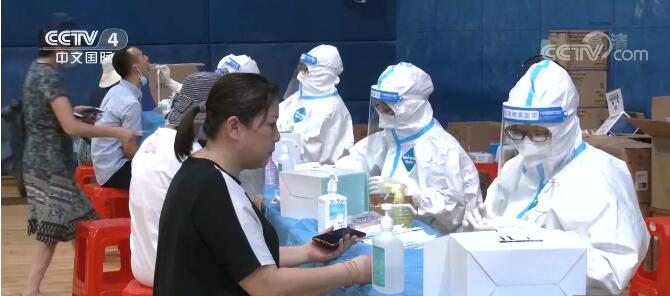A review of the research on the supreme leader’s economic thought
Since the 18th National Congress of the Communist Party of China, the CPC Central Committee with the Supreme Leader as the core has been far-sighted, comprehensively grasped the general trend of world development, profoundly summed up the experience and lessons of domestic and international development, creatively put forward a series of new ideas, new ideas and new strategies for governing the country and politics, founded and formed the economic thoughts of the Supreme Leader, scientifically guided China’s economic reform and development practice in the new era, and promoted historical achievements and changes in economic and social development. Facing the complicated situation since the outbreak of the COVID-19 epidemic, the CPC Central Committee with the Supreme Leader as the core coordinated the overall situation of the great rejuvenation strategy of the Chinese nation and the unprecedented changes in the world in the past century, led the country to achieve stable, sustained and healthy economic and social development with superb leadership, firm political belief and perseverance, and further enriched and developed the economic thought of the Supreme Leader in practice.
Theoretical circles have actively carried out propaganda and interpretation and physical and chemical research around the formation and development of the supreme leader’s economic thought, and have made gratifying progress in both breadth and depth. Sorting out these research results will help us to understand the core essence and essence of the supreme leader’s economic thought more deeply, grasp the spiritual essence and value pursuit of the supreme leader’s economic thought more accurately, strengthen the ideological and theoretical arms more effectively and guide practice.
First, the scientific theory of answering the question of the times
The 19th National Congress of the Communist Party of China made a major judgment that "Socialism with Chinese characteristics has entered a new era". The new era calls for new theories, which lead to new practice. Socialism with Chinese characteristics’s entry into a new era is the prerequisite and the biggest development background for the supreme leader’s economic thought. Experts and scholars interpret the call of the new era for new economic ideas from different perspectives.
First, from the perspective of the changes in the main social contradictions in China. In the new era, the main contradiction in our society is transformed into the contradiction between the people’s growing need for a better life and the unbalanced development. The development among regions, urban and rural areas and industries is still unbalanced, and the quality, efficiency and motivation of development need to be changed and upgraded. A series of new contradictions, problems and challenges in economic development urgently need new ideas to answer and solve.
Second, from the perspective of changes in economic development stages. The new era means that China’s economy has shifted from a high-speed growth stage to a high-quality development stage. The stage of high-quality development pays more attention to better meeting the people’s growing needs for a better life. The new stage is facing new topics and needs new theories to guide it.
Third, from the perspective of building a modern and powerful country. In the new era, the Chinese nation has ushered in a great leap from standing up, becoming rich and becoming strong. Building a modern and powerful country has become a realistic goal, which requires new economic development methods to support and new development concepts to guide.
Fourth, from the perspective of problem orientation. The international situation is complex, severe and changeable, and the world is facing a great change that has never happened in a century. Global issues and world governance problems are prominent, which requires China to play a greater role and contribute to China’s wisdom and China’s strength. China’s economic and social construction has made great achievements, but it has also encountered some new problems and challenges. "The problem is the slogan of the times", "The times are the writers, and we are the respondents". In a certain sense, the supreme leader’s economic thought is produced to solve the problems of the times, and it is a new interpretation and new answer to the eternal theme of "development" in the new era.
Second, profound ideological content
(A) the new development concept and "seven adherences" are the main contents of the supreme leader’s economic thought.
Before Socialism with Chinese characteristics’s economic thought in the new era of the Supreme Leader was formally put forward, scholars used "General Secretary of the Supreme Leader’s important exposition on economic work" and "Supreme Leader’s economic strategic thought". After General Secretary of the Supreme Leader put forward the concept of "new normal" during his inspection tour in Henan in May 2014, some scholars took "new economic normal" as an important content of research.
In October 2015, the Fifth Plenary Session of the 18th CPC Central Committee adopted the Central Committee of the Communist Party of China’s Proposal on Formulating the Thirteenth Five-Year Plan for National Economic and Social Development, which put forward five development concepts of innovation, coordination, green, openness and sharing for the first time. In his speech at the second plenary session of the Fifth Plenary Session of the 18th CPC Central Committee, General Secretary of the Supreme Leader pointed out that the concept is the forerunner of action, the development concept is strategic, programmatic and leading, and it is the concentrated expression of development ideas, development direction and development focus. General Secretary of the Supreme Leader scientifically explained the logical relationship between the five development concepts: innovation and development focus on solving the problem of development motivation; Coordinated development focuses on solving the problem of unbalanced development; Green development focuses on solving the problem of harmony between man and nature; Open development focuses on solving the problem of internal and external linkage of development; Sharing development focuses on solving social fairness and justice problems. General Secretary of the Supreme Leader emphasized in many important speeches that the new development concept is a profound change that has a bearing on the overall development of our country.
The Central Economic Work Conference held in December 2017 clearly pointed out: "In the past five years, we have persisted in observing the general trend, seeking the overall situation and doing practical things, successfully controlled the overall situation of China’s economic development, and formed the supreme leader’s new era Socialism with Chinese characteristics’s economic thought with the new development concept as the main content in practice." This is the first time that the central authorities put forward the concept of "Socialism with Chinese characteristics’s Economic Thought of the Supreme Leader in the New Era", and it is also the first formal formulation of a specific aspect of Socialism with Chinese characteristics Thought of the Supreme Leader in the New Era, from which we can see the important position of the Supreme Leader’s Economic Thought. The meeting pointed out that the economic thought of the supreme leader "takes the new development concept as the main content" and emphasized "seven persistences": persisting in strengthening the centralized and unified leadership of the party over economic work to ensure the development of China’s economy in the right direction; Adhere to the people-centered development thought, which runs through the overall layout of "five in one" and the coordinated promotion of "four comprehensive" strategic layout; Adhere to the adaptation and grasp the new normal of leading economic development, base on the overall situation and grasp the law; Insist on making the market play a decisive role in resource allocation, give better play to the role of the government, and resolutely remove institutional and institutional obstacles to economic development; Persist in adapting to the main contradictions and changes in China’s economic development, improve macro-control, make a choice according to the camera, and prescribe a correct prescription.Take promoting supply-side structural reform as the main line of economic work; Adhering to the problem-oriented deployment of the new strategy of economic development has a far-reaching impact on China’s economic and social development and reform; Adhere to the correct work strategies and methods, strive for progress steadily, maintain strategic strength, adhere to the bottom line thinking, and move forward step by step.
There are two main generalizations of the economic thoughts of the Supreme Leader in theoretical circles: one is "1+7", where "1" refers to the new development concept and "7" refers to "seven persistences"; The other is directly summarized as "seven persistences". Most scholars hold the former view, and many discussions are generally within this range, although they are from different angles.
(B) General Secretary of the Supreme Leader’s series of important theoretical judgments on the overall situation of China’s economic development
In addition to the new development concept and the "seven adherences", many scholars have sorted out the theoretical judgments and strategic plans concerning the overall situation of China’s economic development, and believe that the following conclusions are also an important part of the supreme leader’s economic thought.
First, adhere to the theory of the primary stage of socialism, adhere to the basic socialist economic system such as public ownership as the main body, the common development of various ownership economies, distribution according to work as the main body, the coexistence of various distribution methods, and the socialist market economic system. This is an important pillar of the Socialism with Chinese characteristics system and the foundation of the socialist market economic system.
The second is to adhere to overall development and security. Adhere to the overall concept of national security, strengthen the national security system and capacity building, strengthen the national economic security guarantee, run security development through all fields and the whole process of national development, and prevent and resolve various risks and challenges that affect China’s modernization process.
The third is to promote high-quality development, which is the theme of economic and social development in the new era. High-quality development is the general requirement for all aspects of economic and social development. It is necessary to embody the new development concept from supply, demand, input and output, distribution, macroeconomic cycle and other aspects to better meet the people’s growing needs for a better life.
The fourth is to build a modern economic system, which is the strategic goal of China’s development. It is necessary to build an industrial system that is led by innovation and develops in coordination, an urban-rural regional development system that highlights advantages and is coordinated, a multi-balanced, safe and efficient all-round opening system, a unified, open and competitive market system, an efficient and fair income distribution system, a resource-saving and environment-friendly green development system, and an economic system that gives full play to the role of the market and the government. Several systems are a unified whole, which should be built and promoted as a whole.
The fifth is to promote the supply-side structural reform, which is the main line of economic work at present and for a long time to come. The general requirement for promoting supply-side structural reform is to "consolidate, strengthen, upgrade and smooth", and the five major tasks of "de-capacity, de-inventory, de-leverage, cost reduction and short-boarding" are focused on. The fundamental purpose is to resolve various structural imbalances faced by China’s economic development, improve supply quality, and make supply capacity better meet people’s growing needs for high-quality life.
Sixth, speed up the construction of a new development pattern with the domestic big cycle as the main body and the domestic and international double cycles promoting each other. The new development pattern defines the path choice of China’s economic modernization, emphasizes the domestic market, gives full play to the advantages of China’s ultra-large-scale market, and makes the domestic market and the international market better connected by exerting the potential of domestic demand on the basis of domestic demand leading and internal recycling.
Seventh, promoting social fairness and justice and gradually realizing the common prosperity of all people are the essential requirements of socialism and the important goal of socialist modernization. It is necessary to promote common prosperity in high-quality development, focus on expanding the scale of middle-income groups, strengthen the regulation and adjustment of high income, promote the equalization of basic public services, promote the common prosperity of people’s spiritual life, and promote the common prosperity of farmers and rural areas.
There are also scholars who specialize in studying the important expositions of the Supreme Leader’s General Secretary on some important issues, development concepts and strategic planning in specific fields, such as finance and taxation, real economy, digital economy, ecological economy, rural revitalization, regional coordination, global economic governance, the "Belt and Road Initiative" and the concept of a community of human destiny, which are also important components of the Supreme Leader’s economic ideology.
Third, a strict and complete logical system
Scholars comb the theoretical logic, historical logic and practical logic of the supreme leader’s economic thought from different perspectives in order to better grasp its core essence. The generalization of "1+7" has been widely recognized by theoretical circles. The new development concept occupies a leading position in the supreme leader’s economic thought, and the "seven persistences" as specific requirements and strategic measures are organically combined to form a complete ideological system with strict logic and rich content.
It is generally believed that the logical starting point of the supreme leader’s economic thought is that Socialism with Chinese characteristics has entered a new era. Some scholars also believe that "people-centered" has a foundation and leading significance for the systematic construction and innovative development of the supreme leader’s economic thought. Other scholars advocate that the logical starting point is the change of major social contradictions.
Some scholars use a judgment, a goal, five concepts, a main line, a method and a fundamental guarantee to summarize the theoretical framework of the supreme leader’s economic thought. A judgment means that China’s economy has changed from a high-speed growth stage to a high-quality development stage. One goal is to build a modern economic system. Five concepts, namely the new development concept. A main line refers to the supply-side structural reform as the main line of economic work. One method refers to the general tone of the work of striving for progress while maintaining stability. Fundamental guarantee refers to the party’s centralized and unified leadership over economic work.
Some scholars have expounded the rich connotation, structure and logical system of the supreme leader’s economic thought from five dimensions: essentialism, axiology, epistemology, practice and methodology. Adhering to the party’s leadership is the most essential feature of Socialism with Chinese characteristics’s economy; Taking the people as the center highlights the value orientation of the supreme leader’s economic thought and clearly answers the question of "for whom does Socialism with Chinese characteristics’s economy develop" in the new era; The new normal is the key to know and understand the supreme leader’s economic thought; Insist on making the market play a decisive role in resource allocation, give better play to the role of the government, persist in promoting supply-side structural reform as the main line of economic work, persist in problem-oriented deployment of new economic development strategies, clarify the practical requirements and key points of Socialism with Chinese characteristics’s economic construction in the new era, and systematically answer the question of "how to achieve development"; It is an important methodological principle of the supreme leader’s economic thought to persist in striving for progress in stability and adhering to the bottom line thinking.
As for how to grasp the economic thoughts of the supreme leader, some scholars pointed out that it is necessary to adhere to the integrity and systematicness, and to grasp the economic thoughts and views put forward by the general secretary of the supreme leader at different times since the 18 th National Congress of the Communist Party of China as a whole with internal relations and sustainable development.
Fourth, rich and profound theoretical sources
Scholars mainly trace the economic thought of the supreme leader from the following aspects.
First, the theoretical basis of the supreme leader’s economic thought is Marxist political economy. From studying, studying and applying Marxist political economy to "adhering to the major principles of Socialism with Chinese characteristics’s political economy" and "constantly improving the theoretical system of Socialism with Chinese characteristics’s political economy", General Secretary of the Supreme Leader is the process of constantly China-izing and modernizing the basic principles of Marxist political economy and forming the economic thoughts of the Supreme Leader. The basic value orientation of "people-centered" and "development for the people" is based on adhering to Marxist labor theory of value.
Second, the supreme leader’s economic thought is the inheritance and development of Mao Zedong Thought and Socialism with Chinese characteristics’s economic development thought. For example, correctly handle a series of major relations in economic and social development, adhere to the theory of the primary stage of socialism, adhere to the liberation and development of social productive forces, adhere to the theme of the times, adhere to the value orientation of maximizing people’s interests, adhere to the goal of building a well-off society in an all-round way and realizing modernization, adhere to the basic socialist economic system and establish and improve the socialist market economic system, adhere to strengthening the party’s leadership over economic work, adhere to the "national chess game", "overall consideration" and "striving for progress while being stable"
Third, the supreme leader’s economic thought has absorbed the nutrition of Chinese excellent traditional culture. China’s thoughts on governance and development, which have been handed down for thousands of years, are often quoted by the Supreme Leader General Secretary in his speech and creatively applied to his practice of governing the country.
Fourth, the supreme leader’s economic thought draws lessons from the beneficial components of western economics and profoundly summarizes the experience and lessons of contemporary capitalist economic development. In the 28th collective study in the Political Bureau of the Central Committee in 2015, General Secretary of the Supreme Leader pointed out that we adhere to the basic principles and methodology of Marxist political economy, and do not exclude the reasonable components of foreign economic theories. We should pay attention to learning from the aspects of western economics that reflect the general laws of socialized mass production and market economy, and at the same time, we should persist in removing the rough and selecting the fine, discarding the false and retaining the true, and take ourselves as the main factor and serve us.
V. Solid and heavy practical foundation
Scholars believe that tracing back to the practical source of the supreme leader’s economic thought mainly focuses on three aspects.
First, the major measures and successful experiences of socialist construction since the founding of New China, especially since the reform and opening up. This is the practical source of Socialism with Chinese characteristics Theory, and the supreme leader’s economic thought is the inheritance and development of these outstanding achievements.
Second, the great practice and brilliant achievements of Socialism with Chinese characteristics’s economic construction since the 18th CPC National Congress. Since the 18th National Congress of the Communist Party of China, the recovery of the world economy has been weak, local conflicts and turmoil have occurred frequently, and global problems have intensified. The CPC Central Committee with the Supreme Leader as the core has put forward a series of new ideas, new ideas and new strategies, promulgated a series of major principles and policies, launched a series of major initiatives, pushed forward a series of major tasks, solved many long-term unsolved problems, and made many major events that were tried but not done in the past, which promoted historic changes in the cause of the party and the state. This is the main practical basis of the supreme leader’s economic thought.
Third, General Secretary of the Supreme Leader has extraordinary personal experience and rich political experience. Comrade Supreme Leader’s life experience as an educated youth in northern Shaanxi, which is in harmony with the yellow land and local people, has made him establish the belief of serving the people wholeheartedly and laid the foundation of people-centered economic thought. The exploration of the Supreme Leader’s leading local economic work during his stay in Hebei and Fujian is the practical accumulation of the formation of the Supreme Leader’s economic thought. Comrade Supreme Leader visited Jinjiang seven times when he was working in Fujian, and put forward "Six Persistences", including the ideas of always adhering to the development of social productive forces as the fundamental direction of reform and development and always adhering to the market-oriented economic development. The above practical wisdom was further deepened when Zhejiang and Shanghai were in power, and the "Eight-eighth Strategy" and "Lucid waters and lush mountains are invaluable assets" were put forward while working in Zhejiang. Long-term experience at the grass-roots level has enabled the Supreme Leader to accumulate rich experience in economic work, and have personal feelings and deep thoughts on issues concerning agriculture, rural areas and farmers, people’s livelihood, poverty alleviation, coordinated development, opening to the outside world, ecological environment and innovative development, which have become the direct practical basis for the formation of his economic thoughts.
VI. Significant and profound theoretical innovations
Scholars generally believe that the supreme leader’s economic thought is the theoretical crystallization of the combination of Marxist political economy and the concrete reality of China’s economic development, and it is the innovative achievement of Socialism with Chinese characteristics’s political economy, which breaks through the traditional barriers of western economics, expands the way for developing countries to move toward modernization, and contributes China’s wisdom and China’s plan to solving human problems.
(A) the development and innovation of Marxist political economy
The first is to solve some difficult problems in political economy. People-centered thought has developed Marx’s labor theory of value and dispelled some people’s doubts about whether the labor theory of value can support the value orientation of Socialism with Chinese characteristics’s market economy reform. Adhere to the idea of making the market play a decisive role in resource allocation and better play the role of the government, and solve the theoretical problem of whether public ownership and market economy can be unified. The idea of supply-side structural reform is a further deepening of Marxist political economy theory on productivity and production relations, and a new theory to promote the advanced development of productivity.
The second is to enrich the new connotation of Marxist methodology. Insisting on problem orientation deepens the dialectical relationship between practice and cognition. Persisting in striving for progress in stability embodies the dialectical unity of movement and stillness, quantitative change and qualitative change, and is a vivid application and innovative development of materialist dialectics. Maintaining strategic strength is a creative application of contradiction analysis. Adhering to the bottom line thinking highlights the grasp of the stipulation of matter and matter, which is a major innovation in philosophical thinking mode.
Third, the category of "Socialism with Chinese characteristics’s Political Economy" is a profound change in the theory of political economy. Comrade Deng Xiaoping once pointed out that the Decision of the Central Committee of the Communist Party of China on Economic System Reform adopted at the Third Plenary Session of the Twelfth Central Committee of the Communist Party of China "wrote a first draft of political economy, which is a combination of the basic principles of Marxism and the socialist practice in China". The Central Economic Work Conference held in December 2015 proposed that we should adhere to the major principles of Socialism with Chinese characteristics’s political economy, emancipate and develop social productive forces, and adhere to the direction of socialist market economy reform, so that the market can play a decisive role in resource allocation. The category of "Socialism with Chinese characteristics’s Political Economy" is a systematic summary and sublimation of Socialism with Chinese characteristics’s economic construction theory since the reform and opening up, and has opened up a new realm of Marxist political economy in contemporary China.
(B) the development and innovation of Socialism with Chinese characteristics’s economic theory.
First, judging the reality of economic development by the new orientation of China’s development history and the changes of major social contradictions, and making a new judgment that China’s economy has entered a new stage of development have become an important basis for determining the direction of macroeconomic policies.
Second, the people-centered idea runs through the economic development in the new era and takes "accurate poverty alleviation" and "comprehensive well-off society" as the most important practical form in the contemporary era, which scientifically answers the question of "for whom to develop" and becomes the starting point and basic position of economic work.
Third, the new concept of development is a new concept of development that can solve the practical problems faced by China’s economic development when Socialism with Chinese characteristics enters a new era, enhance the development momentum, cultivate development advantages and lead economic development.
Fourth, it is a new breakthrough in the combination of socialism and market economy to insist on strengthening the centralized and unified leadership of the party over economic work and making the market play a decisive role in resource allocation and better play the role of the government.
(C) breaking through the barriers of western economics
The supreme leader’s economic thought draws lessons from the beneficial components of western economics, and has achieved breakthroughs and transcendence in many aspects.
First, it breaks through the analytical paradigm of binary opposition between government and market in modern western mainstream economics.
Second, adhering to the people-centered basic position is essentially to pursue the unity of fairness and efficiency in the process of economic growth, and then realize the all-round development of human beings, which transcends the assumption that the mainstream western economics takes profit maximization as the theoretical development premise, and avoids the resulting contradictions and various crises that the western economy continues to evolve.
Thirdly, the emphasis on independence and taking the road of modernization in line with China’s national conditions enriches and develops the connotation of the road of modernization, and breaks through the theoretical assumption and guidance that "modernization" equals "westernization" implied in the context of mainstream western economics.
Fourth, the supply-side structural reform is substantially different from the western supply school, which is an innovation and a major transcendence of the latter. The western supply school aims to solve the problem of stagflation, with large-scale tax reduction as the main means. The focus of supply-side structural reform in China is to liberate and develop social productive forces, promote structural adjustment, improve supply quality and improve total factor productivity, with the aim of making supply capacity better meet the growing, upgrading and personalized material, cultural and ecological environment needs of the broad masses of people.
Fifth, it has surpassed the economic growth and development theory of western economics, and formed an economic development concept and road with China characteristics. It transcends the western theory of comparative advantage in international trade and the theory of factor endowment, and adheres to the principle of ensuring national autonomy and mutual benefit and win-win in opening up, thus breaking and crossing the "development trap" such as stagnation of economic growth, dependence of international division of labor and debt crisis.
(D) Promote the reconstruction of the theory of international economic relations
With the deepening of economic globalization, the interests and destinies of all countries in the world are more closely linked. World affairs need to be discussed and handled by all countries more and more, and global challenges need more and more cooperation from all countries. It is in this new situation that the Supreme Leader General Secretary put forward the idea of building a community of human destiny, demanding that the legitimate concerns of other countries be taken into account when pursuing their own interests, promoting common development of all countries in the pursuit of their own development, establishing a more equal and balanced new global development partnership, enhancing the common interests of mankind and jointly building a better home on earth.
Some scholars have pointed out that "the community of human destiny" is a leading concept, which comprehensively promotes the original concepts in terms of international power, common interests, sustainable development and global governance, scientifically determines the basic starting point of international economic relations in the process of socialist modernization, and points out the path to solve global problems and promote global governance.
Some scholars have pointed out that the construction of a "community of human destiny" can solve the problems of anti-globalization, populism and trade protectionism in the current globalization process, and better guide the new globalization to a fairer and more harmonious development path. This is a new and significant theoretical original contribution put forward by China in the light of the new global economic situation, which has promoted the reconstruction of the theory of international economic relations.
Seven, a powerful weapon with great practical power
The new era produces new ideas, which guide new practice. The supreme leader’s economic thought provides us with a fundamental follow-up and action guide for doing a good job in economic work. Some scholars have pointed out that there are several important points to understand the guiding significance of the supreme leader’s economic thought to the practice of economic work: first, to form the institutional mechanism of the party’s centralized and unified leadership over economic work; The second is to form an economic policy system guided by the new development concept; The third is to form an economic development idea with supply-side structural reform as the main line; The fourth is to form an economic work methodology of striving for stability, emphasizing scientific thinking such as problem-oriented and bottom-line thinking.
Focusing on promoting high-quality development, the Central Economic Work Conference held in December 2017 put forward eight key tasks: deepening supply-side structural reform, stimulating the vitality of various market players, implementing rural revitalization strategy, implementing regional coordinated development strategy, promoting the formation of a new pattern of comprehensive opening-up, improving people’s livelihood, accelerating the establishment of a housing system with multi-agent supply, multi-channel guarantee and simultaneous rent and purchase, and accelerating the construction of ecological civilization. Some scholars attribute these measures to the practical path to realize the strategic goal of building a modern economic system.
Scholars generally believe that since the 18th National Congress of the Communist Party of China, the historic achievements and changes in China’s economic development have benefited from the scientific guidance of the supreme leader’s economic thought and the successful practice of this important thought. The economic thought of the supreme leader gives a new answer to the question of "what kind of economic development to achieve and how to achieve it" in the new era. The new development concept and "seven adherences" provide a scientific practical guide for achieving higher quality, more efficient, fairer, more sustainable and safer development. Some scholars believe that the overall victory in the fight against poverty and the great achievements in building a well-off society in an all-round way have embodied the practical guidance of the supreme leader’s economic thought.
The 2020 Central Economic Work Conference emphasized our regular understanding of doing a good job in economic work under severe challenges: the authority of the CPC Central Committee is the fundamental reliance of the whole party and the people of all ethnic groups in times of crisis; The supremacy of the people is the fundamental prerequisite for making a correct choice; Institutional advantage is the fundamental guarantee to form a powerful force to overcome the difficulties; Scientific decision-making and creative response are the fundamental methods to turn crisis into opportunity; Self-reliance of science and technology is the fundamental support to promote the overall development. Some scholars believe that these summaries made by the Central Economic Work Conference on the reasons for China’s great achievements in epidemic prevention and control and economic and social development under the grim situation have profoundly revealed the great practical guiding significance of the supreme leader’s economic thought to economic work.
Eight, distinctive theoretical character
Scholars have reached the following consensus on some distinctive characteristics of the supreme leader’s economic thought.
One is political. Politics is the fundamental quality of the supreme leader’s economic thought, which is embodied in "adhering to the socialist direction" and "adhering to the party’s centralized and unified leadership over economic work" Taking the political system as an important factor, we pay attention to expounding the relationship between politics and economy and the role of politics in economy, so as to make the supreme leader’s economic thought a "political economy" with distinctive China characteristics, China style and China style.
The second is people’s nature. Adhering to the people as the center is the foothold of the supreme leader’s economic thought, and it is a theoretical principle that not only embodies the party’s fundamental purpose and position, but also runs through the overall layout of "five in one" and the coordinated promotion of "four comprehensive" strategic layouts, and is implemented in all aspects of economic development.
The third is scientific. The economic thought of the Supreme Leader is a theoretical system that leads the high-quality development of China’s economy and society on the basis of inheriting and developing Marxist political economy and Socialism with Chinese characteristics’s economic theory and scientifically analyzing the new changes in China’s economic and social development in the new era. It contains profound academic rationality, rich connotation and rigorous logic.
The fourth is practicality. The formation of the supreme leader’s economic thought has a profound practical foundation, which comes from practice, comes from answering practical topics in the new era and develops in practice. This thought is full of practical wisdom, which plans the practical path of building a modern economic system and realizing the goal of "two hundred years", which is the fundamental follow-up of the party’s leading economic work.
The fifth is cosmopolitan. The supreme leader’s economic thought embodies the common value pursuit of mankind. Insisting on improving people’s well-being and promoting people’s all-round development as the starting point and end result of economic development reflects the common aspiration of mankind for a better life. Committed to peaceful development, emphasizing mutual benefit and sharing, actively participating in global economic governance and building a community of human destiny reflect the common aspiration of human beings for peaceful development, equal development and common development.
Some scholars believe that the distinctive features of the Supreme Leader’s economic thought are: the theoretical character of keeping pace with the times, the core essence of comprehensively deepening reform, the value pursuit of the great rejuvenation of the Chinese nation and the remarkable improvement of people’s living standards, a clear understanding of China’s economic and social development goals and roads, and an unswerving pursuit of modernization in line with China’s national conditions.
Nine, make a significant contribution to the construction of Socialism with Chinese characteristics’s political economy.
In November 2015, General Secretary of the Supreme Leader emphasized in the 28th collective study in the Political Bureau of the Central Committee that we should base ourselves on China’s national conditions and our development practice, reveal new features and laws, refine and summarize the regular achievements of China’s economic development practice, turn practical experience into systematic economic theory, and constantly open up a new realm of Marxist political economy in contemporary China. In July, 2016, General Secretary of the Supreme Leader presided over an expert symposium on economic situation, stressing that to uphold and develop Socialism with Chinese characteristics’s political economy, we should take Marxist political economy as the guide, sum up and refine the great practical experience of China’s reform, opening up and socialist modernization, and learn from the beneficial elements of western economics. In May 2017, the Central Committee of the Communist Party of China issued the Opinions on Accelerating the Construction of Philosophy and Social Sciences with China Characteristics, proposing to accelerate the construction of the discipline system of philosophy and social sciences with China characteristics. A series of important expositions made by the Supreme Leader General Secretary provided a fundamental basis for the construction of Socialism with Chinese characteristics’s political economy, and scholars had a heated discussion on how to build and develop Socialism with Chinese characteristics’s political economy.
The first is about the basic principles that should be adhered to in the construction of Socialism with Chinese characteristics’s political economy. Scholars put forward that we must base ourselves on the primary stage of socialism and reflect the characteristics of the times, which is the general basis for building Socialism with Chinese characteristics and the basis for Socialism with Chinese characteristics’s political economy. Under the guidance of Marxism, we should absorb the important achievements of Socialism with Chinese characteristics’s economic theory and draw lessons from foreign economic theories reasonably. Some scholars put forward that adhering to the principle of liberating and developing productive forces is the basic method and principle of developing and applying Socialism with Chinese characteristics’s political economy, and emphasized that the theory of socialist market economy should occupy an important position in Socialism with Chinese characteristics’s political economy theory system.
The second is about the research object of Socialism with Chinese characteristics’s political economy. Some scholars believe that it should be consistent with the classical Marxist political economy, and take the relations of production as the research object. Some advocate taking the mode of production as the research object, while others emphasize the national characteristics of Socialism with Chinese characteristics. Some scholars believe that Socialism with Chinese characteristics’s political economy studies the laws of production, exchange and distribution in the primary stage of socialism in China, which contains national and historical characteristics.
The third is about the theme and theoretical logic of Socialism with Chinese characteristics’s political economy. Some scholars believe that Socialism with Chinese characteristics’s political economy is to solve a series of outstanding contradictions and problems faced by China’s development, and development is the core theme. The main content of the supreme leader’s economic thought "one idea plus seven persistences" is also the theoretical logic of Socialism with Chinese characteristics’s political economy. Some scholars have suggested that adhering to the people-centered development thought has established the main line for the construction of Socialism with Chinese characteristics’s political economy, and the idea of handling the relationship between the government and the market has established the basic paradigm for the allocation of Socialism with Chinese characteristics’s political economy research resources.
The fourth is about the function of Socialism with Chinese characteristics’s political economy. Some scholars have pointed out that there should be a clear division of labor and boundary division among some disciplines in Socialism with Chinese characteristics’s theoretical system of economic construction, and to achieve a breakthrough in theoretical system construction, it is necessary to clearly divide the disciplinary boundaries of Socialism with Chinese characteristics’s economic construction at the three levels of "guiding ideology", "basic principles" and "realistic economic policy research", so as to play their respective roles.
Ten, to further promote the research to go deep and practical.
(A) the supreme leader’s economic thought research has achieved remarkable results.
The theoretical research on the supreme leader’s economic thought is vigorous, effective and has a good momentum, which is mainly reflected in the following two aspects.
First, important domestic units and departments set up specialized research institutions, which provided strong support for in-depth research on the economic thought of the supreme leader.
Since 2017, the Central Committee of the Communist Party of China has successively approved the establishment of 18 research centers (institutes) for Socialism with Chinese characteristics Thought of the Supreme Leader in the New Era. In 2017, the Central Party School, Ministry of Education, China Academy of Social Sciences, National Defense University, Beijing, Shanghai, Guangdong, Peking University, Tsinghua University and China Renmin University, 10 units were approved. In July 2020, the Ministry of Foreign Affairs was approved. In June, 2021, 7 units from National Development and Reform Commission, Ministry of Ecology and Environment, china law society, Jiangsu, Zhejiang, Fujian and Shandong were approved. The National Development and Reform Commission established the Research Center of the Supreme Leader’s Economic Thought, which is a specialized institution for studying the economic thought of the Supreme Leader, with more than 40 governing units.
In addition to the above-mentioned research institutions approved by the central government, some localities and many colleges and universities have also set up research institutions on Socialism with Chinese characteristics Thought of the Supreme Leader in the New Era. These research institutions give full play to their respective advantages to study the Supreme Leader’s Socialism with Chinese characteristics Thought in the new era, each with its own emphasis and characteristics, and it is one of their important responsibilities to carry out the research on the Supreme Leader’s economic thought.
Second, a large number of national social science fund projects were approved and a large number of high-level research results were published, laying the foundation for further deepening the study of the supreme leader’s economic thought.
According to the national social science fund project database, there are many topics whose project names contain the key words of the top leaders’ economic thoughts, such as: new development concept, people-centered, new economic normal, making the market play a decisive role in resource allocation and giving better play to the role of the government, high-quality development, supply-side structural reform, rural revitalization, Belt and Road Initiative, and community of human destiny.
Searching from China HowNet and the national library’s collection catalogue, the main content of the supreme leader’s economic thought is the key word, and many works are searched out, specifically from different regions, industries and fields. Judging from the publication of the paper, there are many related articles, most of which are in 2018 and 2019, with "the economic thought of the supreme leader" as the keyword search. The number of detailed research papers increased rapidly in 2020 and 2021, among which "high-quality development" and "Belt and Road" were the most, followed by "supply-side structural reform", "new development concept" and "new development pattern".
(B) Further promoting the study of the supreme leader’s economic thought has a long way to go.
The research on the supreme leader’s economic thought has achieved gratifying results and deepened the understanding of a series of related important issues. However, because this idea has not been established for a long time, and it is in the process of continuous enrichment and development, there are still some shortcomings in the theoretical circle in terms of overall grasp, systematic understanding and deepening research, and it is a long way to go to further promote research.
From the previous review of the projects approved by the National Social Science Fund and the publication of research works, it can be seen that the projects and works titled "Economic Thought of the Supreme Leader" or "Economic Thought of Socialism with Chinese characteristics in the New Era of the Supreme Leader" are rarely seen, indicating that there are not many systematic and weighty research results.
Judging from the published articles, there are still some shortcomings in the current research. First, the integrity of the theoretical system of the supreme leader’s economic thought is not combed enough, and the grasp is not in place. Second, there are many general descriptions of the important expositions of the Supreme Leader General Secretary and macro explanations of the theoretical concept itself, and there are many problems in the research, but there is not enough in-depth research on the historical and practical origins of this idea and the elements of the theoretical system. Third, there is insufficient research on how the supreme leader’s economic thought is implemented in economic work practice and guided practice. Fourthly, the world significance of this thought has not been studied deeply. Fifth, most of the researchers come from Marxist theoretical disciplines and economic disciplines, while other disciplines such as politics, sociology, management and history are relatively weak.
(C) Some suggestions for further research.
The supreme leader’s economic thought comes from the practice of China’s socialist modernization, and is constantly enriched and developed in practice. Therefore, the study of this thought is a long-term and systematic project that needs to be deepened and refined continuously. Deepening the research faces an important task, that is, presenting the theoretical system of the supreme leader’s economic thought accurately, completely and systematically, and strengthening the guiding significance of the supreme leader’s economic thought to economic work. Therefore, in the future research work, we need to focus on the following issues.
First, strengthen systematic research and grasp the theoretical system as a whole. The supreme leader’s economic thought is rich and profound. In order to accurately understand and present it completely, it is necessary to further trace the theoretical and practical sources of the supreme leader’s economic thought, deeply understand its value pursuit and practical goal, accurately grasp its core connotation, straighten out its theoretical framework and logical relationship, comprehensively grasp its scientific thinking methods and working methods, and clarify its theoretical innovation, practical guiding significance and world value.
Second, coordinate the research at macro, meso and micro levels. The supreme leader’s economic thought is composed of various and multi-level concrete ideas. The research must go deep into these specific levels and deeply understand the problem consciousness, theoretical connotation and practical direction of these new ideas and strategies.
Third, carry out in-depth investigation and study, and strengthen the summary of the supreme leader’s economic thought practice. Paying attention to the guiding role of theory in practice and the test of theory by practice can help us realize the practical value of the supreme leader’s economic thought more effectively, thus further enhancing our understanding of scientific theory. Since the end of 2020, Economic Daily has carried out in-depth research on the practice of the supreme leader’s economic thought nationwide, published a large number of high-quality research reports, displayed the implementation of the supreme leader’s economic thought and innovative measures in various places, and summarized and popularized successful experiences. This work is worthy of continuous and in-depth promotion on a larger scale.
Fourth, strengthen interdisciplinary research. The supreme leader’s economic thought is the latest achievement of Marxism in contemporary China, which includes political, economic, social, cultural, historical, ecological and other fields, and reflects the development of China and the world. Multidisciplinary perspectives and multidimensional research methods are conducive to the expansion and deepening of research.
Fifth, speed up the construction of Socialism with Chinese characteristics’s political economy. Guided by the series of important expositions of the Supreme Leader’s General Secretary, the discussion on the principles and framework of Socialism with Chinese characteristics’s political economy will enter the stage of discipline entity construction as soon as possible, so that Socialism with Chinese characteristics’s political economy will form a strong support for the study of the Supreme Leader’s economic thought in terms of disciplines, institutions and talents.
Sixth, increase the external publicity and interpretation of the supreme leader’s economic thought. The new development concept and the concept of community of human destiny put forward by the Supreme Leader have profoundly influenced people’s views on the world, relations between countries and human development. China’s great achievements in poverty reduction have made great contributions to global poverty reduction, and the China route of economic modernization has contributed China’s wisdom and China’s plan to the international community. We should make greater efforts to tell the story of China from the perspective of theoretical research, so that the world can understand China more comprehensively, stereoscopically and objectively, and make a peaceful, progressive and prosperous China better benefit the world.
(This article Source: Economic Daily Author: Economic Daily Research Group Member: Ji Zhengju Xu Xiangmei Qin Yue Pei Wen Pen: Ji Zhengju Xu Xiangmei)


